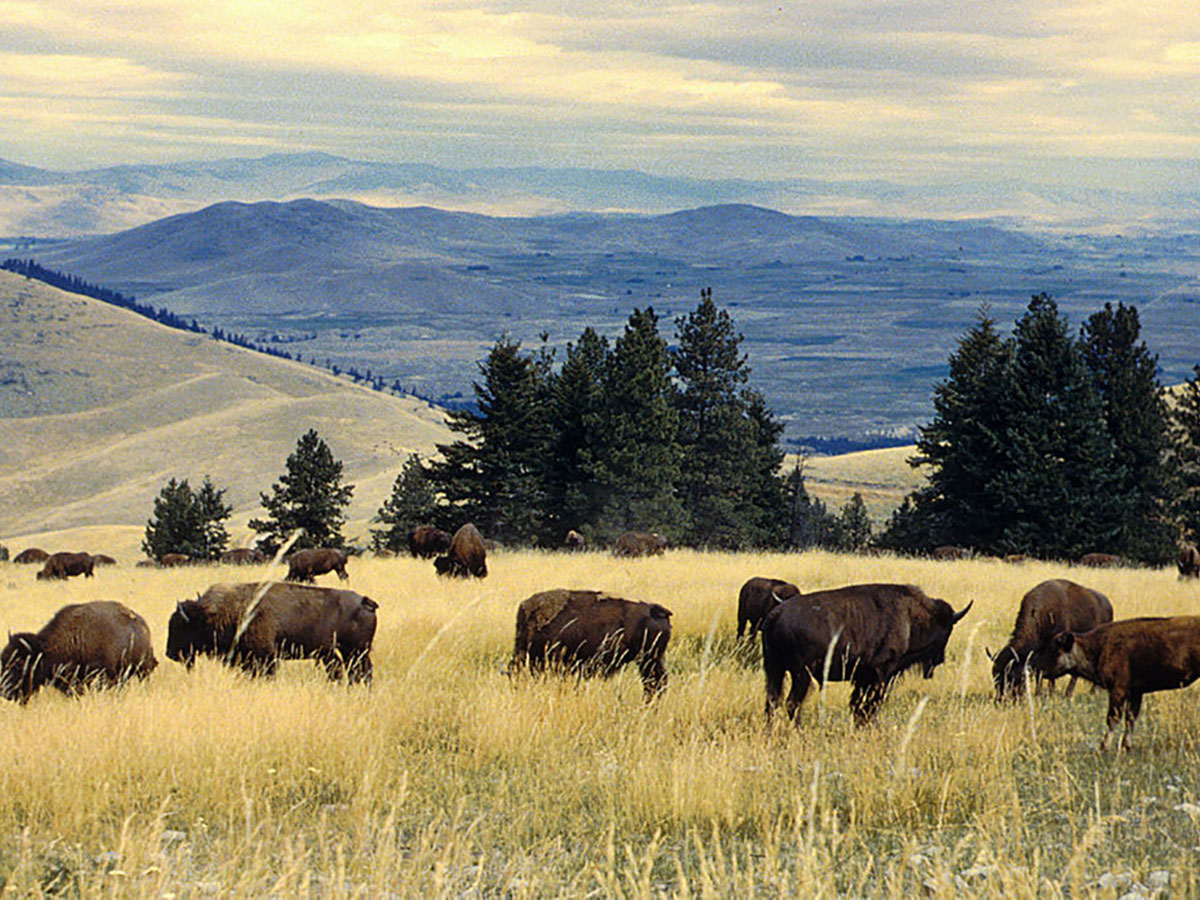UPDATE - April 8, 2022: Good news! At the beginning of 2022, the Confederated Salish and Kootenai Tribes (CSKT) assumed full management of the Bison Range, formerly known as the National Bison Range! The article below was published after the Montana Water Rights Protection Act passed in 2020 which made restoration of the Bison Range to the Tribes possible. Now that the two year transition period is complete, the Bison Range is now fully managed by the Tribes. This article describes some of the unique history of the Range and the long struggle to return management to the Tribes.
-------
Original Feb 1, 2021 post:
While 2020 won’t be at the top of anyone’s list of favorite years, at least one good thing happened: Congress enacted legislation that has far-reaching impacts for the Confederated Salish and Kootenai Tribes (CSKT, or Tribes) and western Montana. In its year-end government appropriations and COVID-19 relief legislation, Congress included the Montana Water Rights Protection Act, which ratified the water rights compact between the Tribes, the State of Montana, and the United States. It also settled the Tribes’ claims against the federal government for past federal mismanagement of the Tribes’ water resources. Among other things, the bill will result in extensive restoration work for riparian areas and surrounding habitat on the Flathead Indian Reservation. In addition to water rights provisions, the legislation corrected a century-old injustice by restoring the National Bison Range to the Tribes.
The Flathead Indian Reservation was reserved by the Tribes under the 1855 Hellgate Treaty. In 1908, after Congress established the National Bison Range, the United States took 18,500 acres of land from the Tribes in the center of their Reservation. The Range was then populated with bison acquired from a herd owned and managed by Tribal members for decades prior to their eviction from their lands so that the Reservation could be opened up to non-Indian settlers for homesteading. In 1971, the US Court of Claims held that this federal taking of the Bison Range land had violated the Fifth Amendment of the Constitution. The court did not have authority to return the land to the Tribes, but it ordered the United States to pay the Tribes fair market value for the land. While that provided some financial recompense to the Tribes, it was a long way from providing justice for the taking of Treaty land.
The National Bison Range has been managed by the US Fish & Wildlife Service (FWS) as part of the National Wildlife Refuge System. The legislation, which was drafted by the Tribes, requires the Tribes to continue to manage the land for bison and wildlife conservation purposes. It also requires continued public access. It further includes a two-year transition period during which the Tribes will assume full management of the Bison Range from FWS.
Since the mid-1990s, the Tribes had pursued co-management agreements with FWS at the National Bison Range under the Tribal Self-Governance Act, which authorizes tribes to contract for Interior Department programs of special geographic, historical, or cultural significance to them–regardless of which agency administers them. The Sierra Club’s former Bitterroot-Mission Group and, later, the Montana Chapter both supported the Tribes’ efforts regarding co-management. The Tribes negotiated three agreements, each of which ran into different obstacles.
In February of 2016, then-FWS Director Dan Ashe asked whether the Tribes would support the Bison Range being returned to federal trust ownership for the Tribes, indicating that FWS might be able to support legislation that would accomplish such a restoration. The Tribes developed draft legislation and embarked on extensive public outreach, garnering widespread support from conservation groups, tribes, and the general public which led to Montana senators Steve Daines and Jon Tester jointly introducing the bipartisan Montana Water Rights Protection Act, including the Bison Range restoration provisions. The Sierra Club actively supported this legislation throughout the process at the local, state, and national levels.
With passage of the legislation, the Tribes are now reunited both with the land in the center of their Reservation and the buffalo herd that descends from the herd that Tribal members had started in the 1870s when plains bison were on the precipice of extinction. A measure of justice, and a good way to begin 2021. For more information, or to see the public law, see: https://bisonrange.org/
